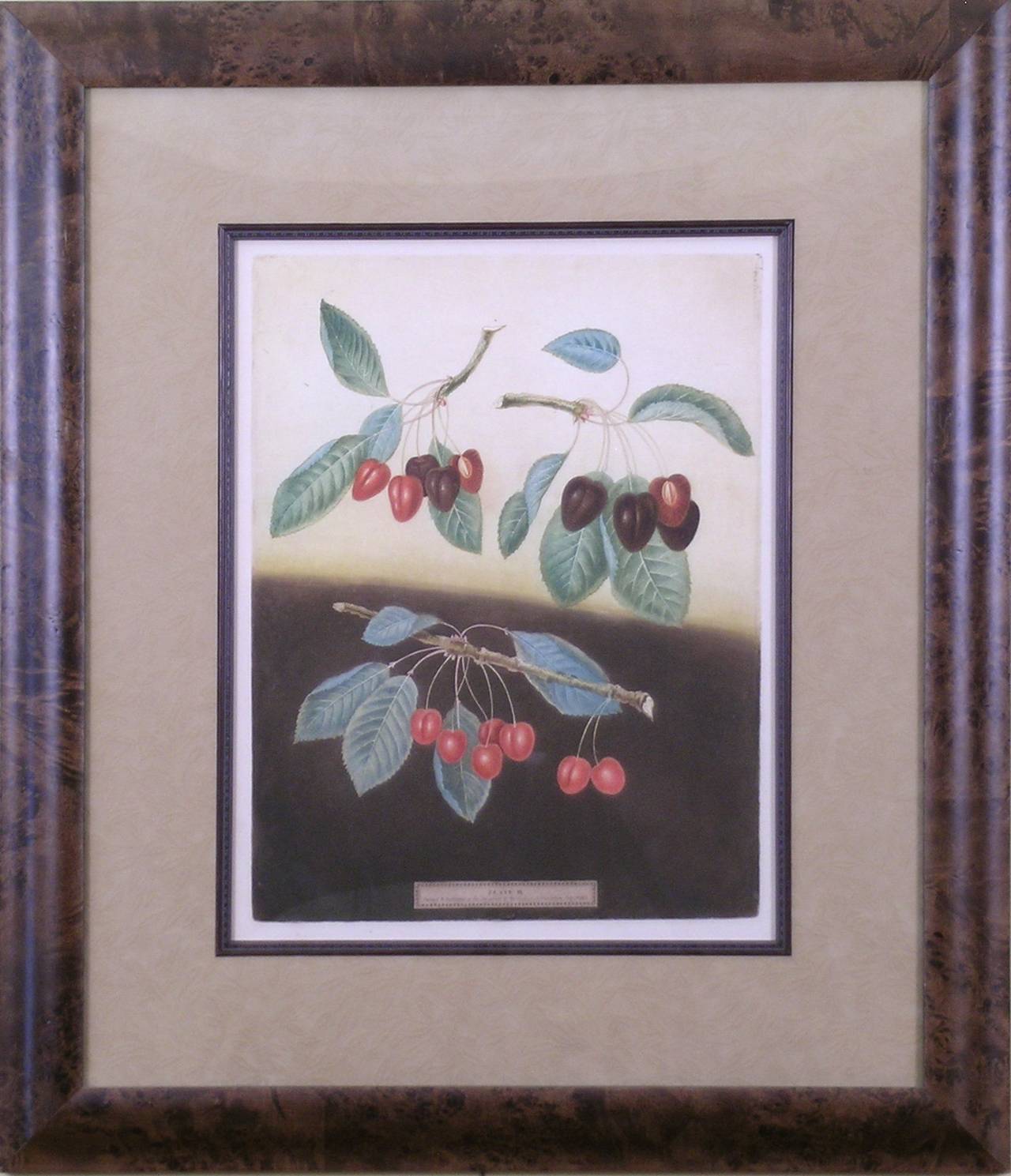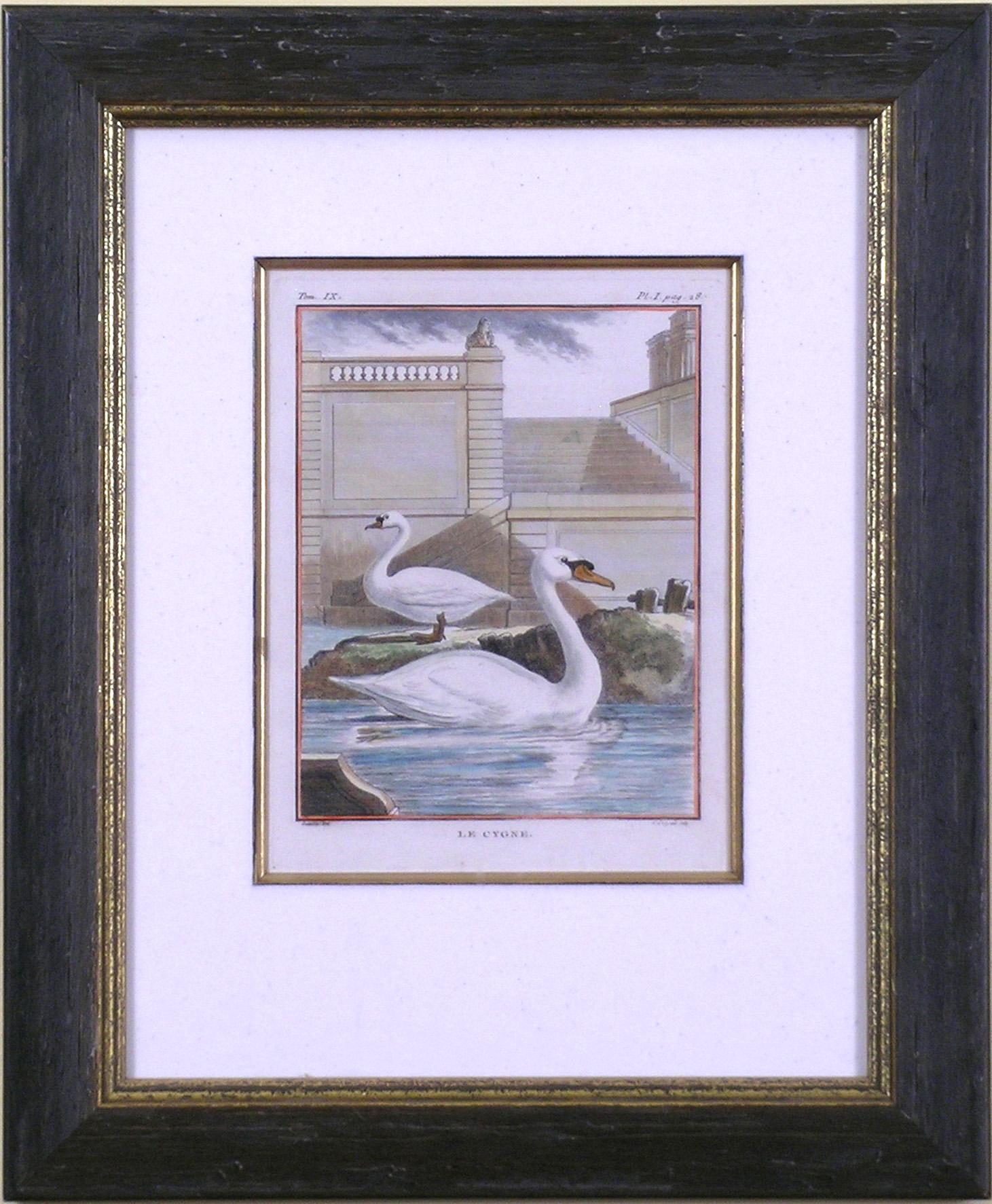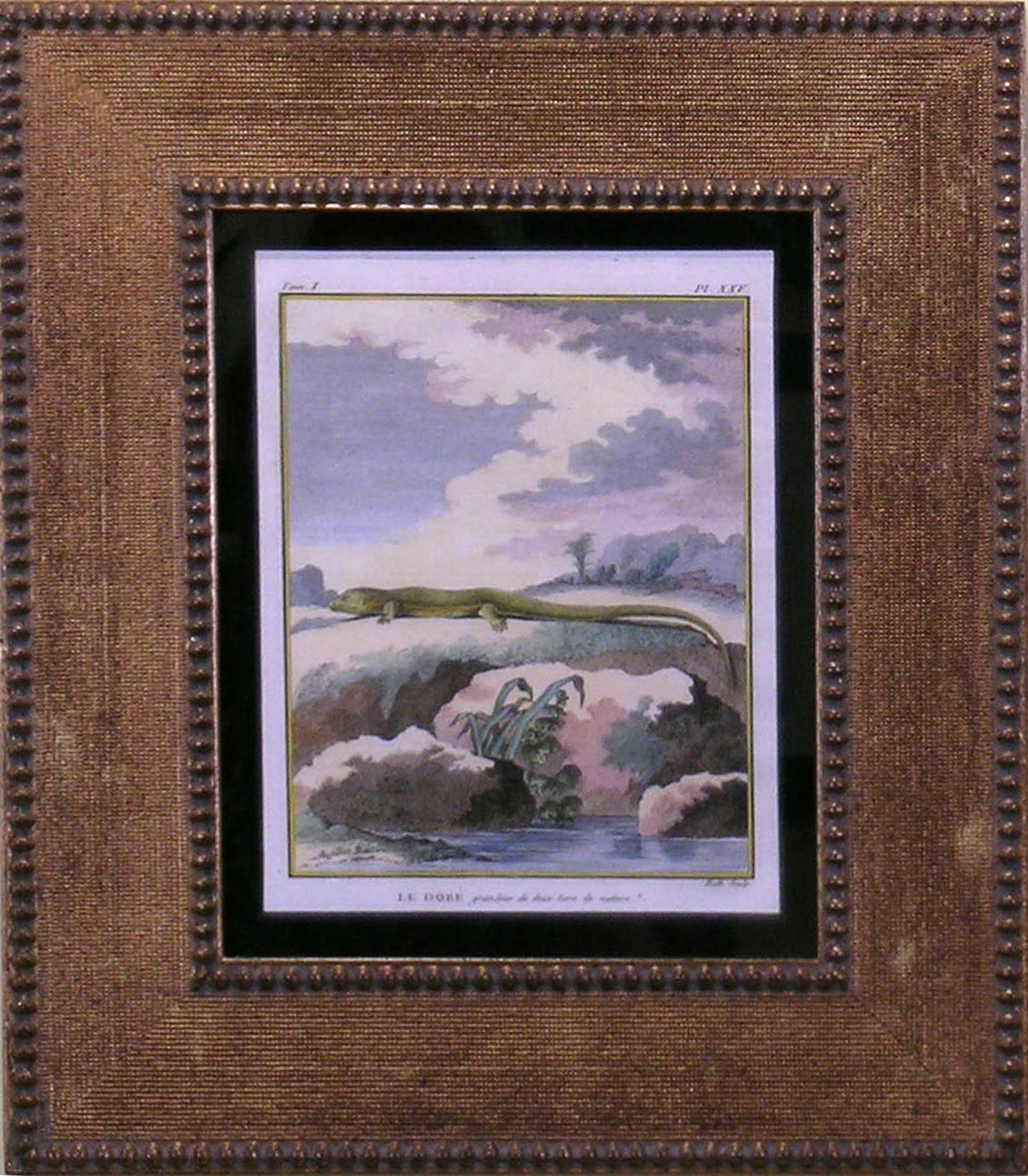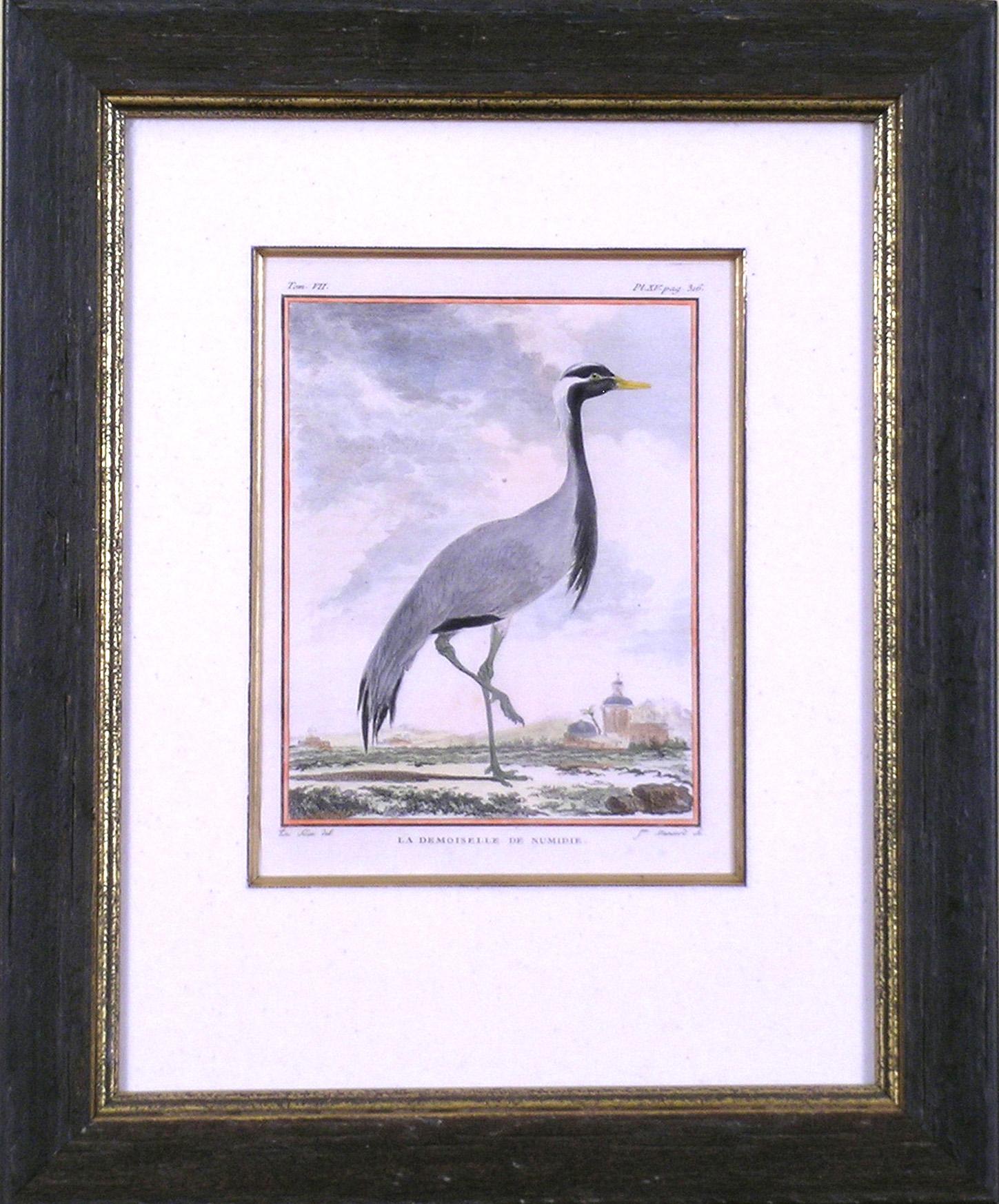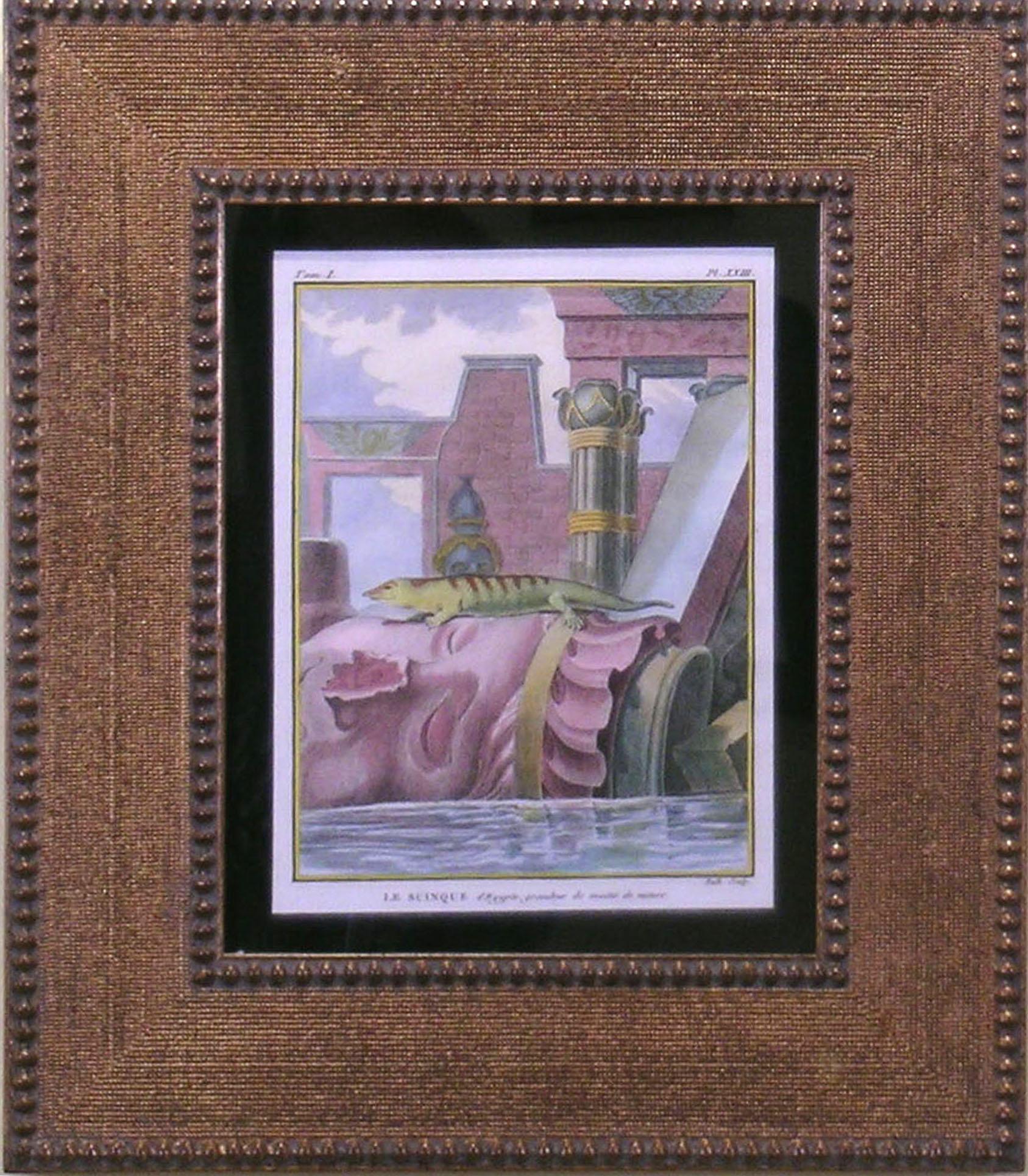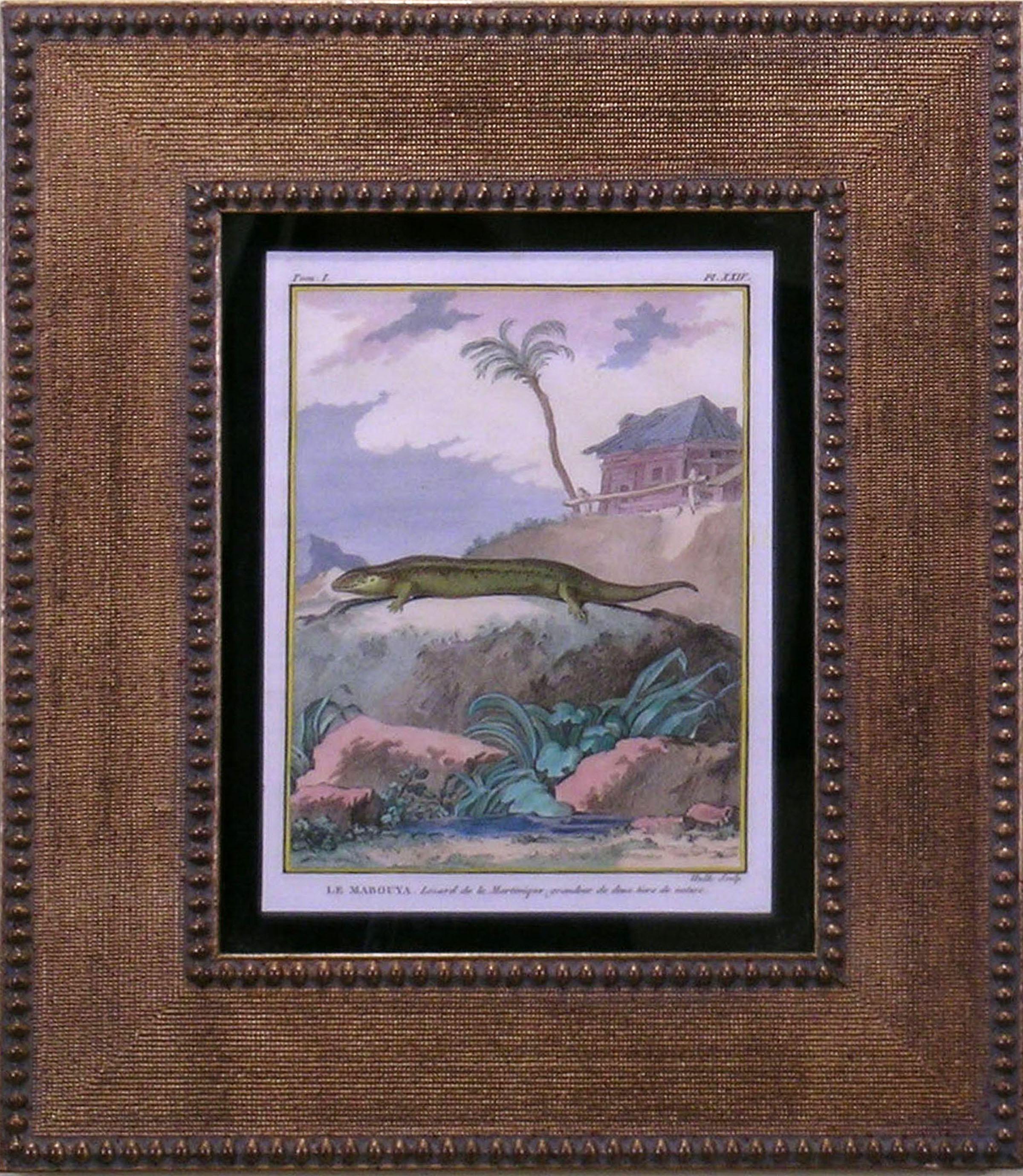Items Similar to Plate 15. Watermelon on the Vine with Arcahia Moth.
Want more images or videos?
Request additional images or videos from the seller
1 of 9
Maria Sibylla MerianPlate 15. Watermelon on the Vine with Arcahia Moth.1705
1705
About the Item
MARIA SIBYLLA MERIAN (1647-1717)
Metamorphosis Insectorum Surinamensium…
(Insects of Surinam)
Amsterdam, 1705
Hand-colored engravings.
Born in Frankfurt, Germany, then a free imperial city of the Holy Roman Empire, during of a Dutch mother and a Swiss father, Maria Sibylla Merian’s life was an intriguing one both personally and professionally. Her father was Matthaus Merian, a renowned illustrator. His first marriage was to Marie Magdalena de Bry, the daughter of Theodore de Bry who was a remarkable 17th century mapmaker and botanical illustrator. Matthaus Merian would then inherit de Bry’s publishing house which included various copper plates engraved with maps and natural history subjects. Merian’s prolific publishing included theology, topography, cartography and natural history. His second marriage, to Johanna Sibylla, gave him a daughter, Maria. Shortly after Matthaus Merian’s death, Johanna Sibylla married Jacob Marrel, an accomplished instructor of drawing painting and engraving. It was Marrel who recognized the early talents of Maria Sibylla and encouraged them. Maria married one of Marrel’s students, Johann Graff of Nuremberg. She bore him two daughters, Dorothea and Johanna.
Thus Maria Merian completes three generations of published illustrators. She is notable not only for her historic accomplishments, but also for her gender breaking achievements. It can therefore come as no surprise that ultimately Maria would leave the man to whom she had been respectably married for many years, the father of her two children, take her mother’s maiden name, and join a religious sect called the Labadists to pursue her own interests and claim her own fame.
While living in the sect’s castle in Holland, Maria observed the cabinets of gorgeous tropical butterflies brought back from Surinam. Although this was the great age of botanical exploration, few artists went on expeditions; they relied on sailors and naturalists to bring them specimens. Considering the attitudes of the times, it took an intrepid and eccentric woman to have the temerity to travel to wild and unexplored lands. But that is exactly what she did. Having successfully published an earlier work on the insects of Europe, Maria, with her daughter Dorothea, exchanged the security of Holland for the rigors of a sea passage to South America in June of1699. The city of Amsterdam sponsored them. Johanna had married a merchant and they relocated to Surinam. For 21 months, mother and daughters made hundreds of drawings of flowers and insects. In the task of representation, their sketches were first made from life and then painted on vellum. Maria became the first naturalist to observe and record the development of certain insects from egg, via the stages of caterpillar and chrysalis, to their final form of moth or butterfly—the ‘metamorphosis’ which became the title of her book. Poor health forced Maria to return home in 1701. But her return was triumphant; her luggage was loaded with rolled paintings, brandied butterflies, bottles with crocodiles and snakes, lizards’ eggs, bulbs, chrysalises that had not yet opened, and many round boxes filled with pressed insects for sale!
Maria Merian worked on the Metamorphosis until its publication of the original 60 plates began in 1705. It is easily the most magnificent work on insects ever produced. Though Merian’s first concern was with the insects she portrayed, the plates also show the plants on which they breed and are nurtured. This information would play an important role in the reforestation of the Amazon centuries later. Exquisitely illustrated, Metamorphosis combines science and art. Sir Sackerville Sitwell states her botanical work is “drawn with the same delicacy and precision as the insects themselves, and the book may thus legitimately be considered a florilegium…” Part of their powerful effect stems from the fact that the insects and their surroundings are drawn life-size.
Posthumous issues of Metamorphosis contained not only the original 60 plates but also 12 additional engravings. These featured the reptiles, amphibians and marsupials, which were to have provided material for an unpublished second volume. Maria’s other daughter, Johanna, had returned to Surinam to make more drawings, which were combined with Maria and Dorothea’s earlier work and used for the second, larger edition of the book. Obviously, the Merian women had been bitten by the same bug.
Reference:
Maria Sibylla Merian, Artist and Naturalist. Kurt Wettengl, Germany, 1997.
Maria Sibylla Merian, The St. Petersburg Watercolors. Eckhard Hollmann. New York, 2003
- Creator:Maria Sibylla Merian (1647 - 1717, Dutch)
- Creation Year:1705
- Dimensions:Height: 23.25 in (59.06 cm)Width: 19.25 in (48.9 cm)
- Medium:
- Movement & Style:
- Period:
- Condition:Beautiful hand-coloring using watercolor in a period palette. Clean, crisp image. Framed to museum specifications using archival matting, backing, hinging. Glazed with ultra-violet filtering Plexiglas.
- Gallery Location:Florham Park, NJ
- Reference Number:
About the Seller
5.0
Gold Seller
These expertly vetted sellers are highly rated and consistently exceed customer expectations.
1stDibs seller since 2014
161 sales on 1stDibs
Typical response time: 3 hours
- ShippingRetrieving quote...Ships From: Florham Park, NJ
- Return PolicyA return for this item may be initiated within 1 day of delivery.
More From This SellerView All
- Cherries. Plate IX.By George BrookshawLocated in Florham Park, NJGEORGE BROOKSHAW (1751 – 1823). Pomona Britannica of a Collection of the Most Esteemed Fruits…. Engravers R. Brookshaw and H. Merke. London, 1812. Aquatint and stipple engravings...Category
Early 19th Century Academic Prints and Multiples
MaterialsEngraving, Watercolor
- Le Cygne (Swan)By Georges-Louis Leclerc, Comte de BuffonLocated in Florham Park, NJGeorge-Louis Leclerec, Comte de Buffon. HistoireNaturell, Generale et Particuliere avec la Description du Cabiner du Roi. Paris, 1749 Drawings by Jacques E. DeSeve. Engravings with l...Category
1740s Academic Prints and Multiples
MaterialsWatercolor, Engraving
- Lizard Le DoreBy Georges-Louis Leclerc, Comte de BuffonLocated in Florham Park, NJGeorge-Louis Leclerec, Comte de Buffon. HistoireNaturell, Generale et Particuliere avec la Description du Cabiner du Roi. Paris, 1749 Drawings by Jacques E. DeSeve. Engravings with l...Category
1740s Academic Prints and Multiples
MaterialsWatercolor, Engraving
- La Demoiselle de Numidie (Crane)By Georges-Louis Leclerc, Comte de BuffonLocated in Florham Park, NJGeorge-Louis Leclerec, Comte de Buffon. HistoireNaturell, Generale et Particuliere avec la Description du Cabiner du Roi. Paris, 1749 Drawings by Jacques E. DeSeve. Engravings with l...Category
1740s Academic Prints and Multiples
MaterialsWatercolor, Engraving
- Lizard Le Scinque Reptile AnimalBy Georges-Louis Leclerc, Comte de BuffonLocated in Florham Park, NJGeorge-Louis Leclerec, Comte de Buffon. HistoireNaturell, Generale et Particuliere avec la Description du Cabiner du Roi. Paris, 1749 Drawings by Jacques E. DeSeve. Engravings with l...Category
1740s Academic Prints and Multiples
MaterialsWatercolor, Engraving
- Lizard Le MabouyaBy Georges-Louis Leclerc, Comte de BuffonLocated in Florham Park, NJGeorge-Louis Leclerec, Comte de Buffon. HistoireNaturell, Generale et Particuliere avec la Description du Cabiner du Roi. Paris, 1749 Drawings by Jacques E. DeSeve. Engravings with l...Category
1740s Academic Prints and Multiples
MaterialsWatercolor, Engraving
You May Also Like
- Bird and Beetle - Etching and watercolor (Natural History of Birds, 1741)By George EdwardsLocated in Paris, FRGeorge EDWARDS Bird and beetle ('The Gowry Bird') Original engraving, enhanced with watercolor Printed signature in the plate Dated, 1741 28.8 x 23.3 cm Created for Volume I of the...Category
1740s Academic Animal Prints
MaterialsEngraving, Watercolor
- Venice, View of the Grand Canal - Original etching and watercolor, 1831By Dionisio MorettiLocated in Paris, FRDionisio MORETTI View of the Grand Canal, 1831 Original etching Finely enhanced by hand with watercolor On vellum 26 x 41 cm (c. 10.2 x 16 inch) ...Category
1830s Academic Landscape Prints
MaterialsWatercolor, Etching
- Venice, Rialto Bridge - Original etching and watercolor, 1831By Dionisio MorettiLocated in Paris, FRDionisio MORETTI Venice, Rialto Bridge, 1831 Original etching Finely enhanced by hand with watercolor On vellum 26 x 41 cm (c. 10.2 x 16 inch) Ve...Category
1830s Academic Landscape Prints
MaterialsWatercolor, Etching
- Venice, Santa Chiara Island - Original etching and watercolor, 1831By Dionisio MorettiLocated in Paris, FRDionisio MORETTI Venice, Santa Chiara Island, 1831 Original etching Finely enhanced by hand with watercolor On vellum 26 x 41 cm (c. 10.2 x 16 inc...Category
1830s Academic Landscape Prints
MaterialsWatercolor, Etching
- Greek Architecture Blueprint of Ancient Amphitheatre Cyanotype Print, WatercolorBy Kind of CyanLocated in Barcelona, ESThis is an exclusive handprinted limited edition cyanotype. Details: + Title: Ancient Roman Amphitheater + Year: 2022 + Edition Size: 50 + Stamped and Certificate of Authenticity provided + Measurements : 70x100 cm (28x 40 in.), a standard frame size + All cyanotype prints...Category
2010s Academic Still-life Photography
MaterialsPhotographic Film, Woodcut, Emulsion, Watercolor, C Print, Color, Lithog...
- Hand-colored 1834 Joseph Paxton Botanical Engraving of Yellow Trumpet FlowersBy Joseph PaxtonLocated in Alamo, CAA hand-colored engraving of yellow trumpet flowers from Sir Joseph Paxton's (1803-1865) "Magazine of Botany and Register of Flowering Plants", published in 1834. This engraving entit...Category
Early 19th Century Academic Figurative Prints
MaterialsEngraving
Recently Viewed
View AllMore Ways To Browse
The Vine
Plates With Houses
Record Plate
Plates With Sea
From Plant To Plate
Tropical Art Prints
The Antique Exchange
Womens On Sale
The Watermelon
Original Copper Engraving Plate
Castle Plates
Engraving Religious
Mother And Daughters Print
Antique Childrens Plates
Antique Cans And Bottles
18th Century American Prints
Engraving Print Children
Antique Moth
